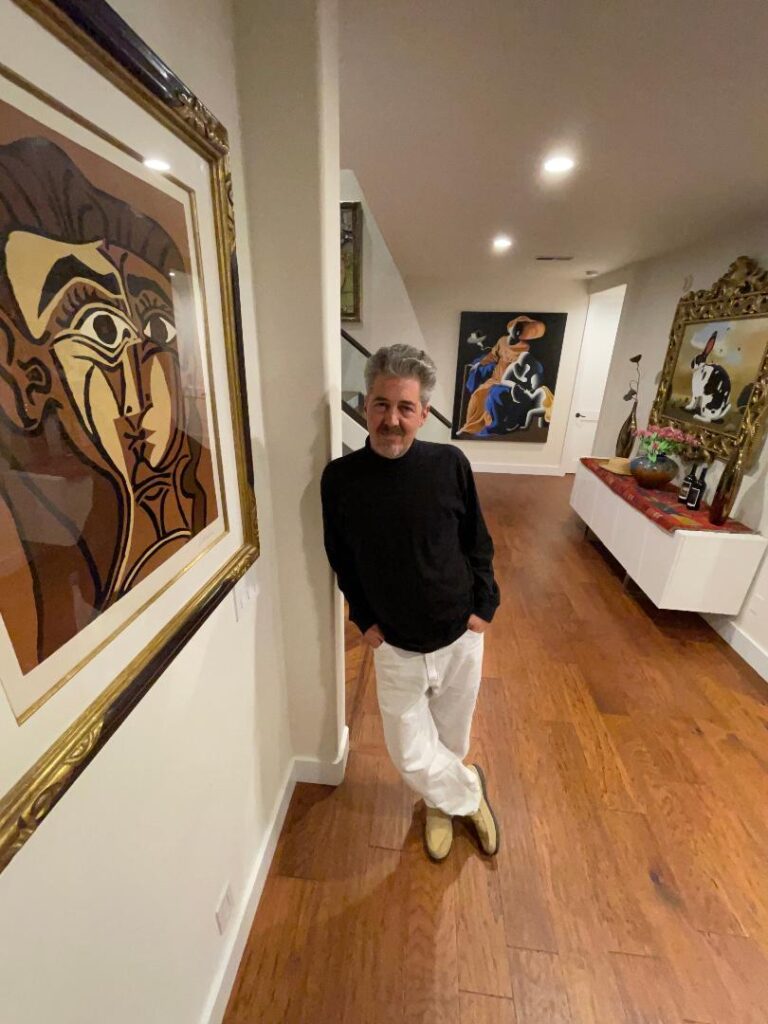Philip Lawson, The Conceptual Artist

The term conceptual art was first used to reference this distinct movement in an article written by Sol LeWitt in 1967:
“In conceptual art the idea or concept is the most important aspect of the work. When an artist uses a conceptual form of art, it means that all of the planning and decisions are made beforehand and the execution is a perfunctory affair.”
LeWitt, ‘Paragraphs on Conceptual Art’, Artforum Vol.5, no. 10, Summer 1967, pp. 79-83
Lawson’s theory of conceptual art differs from the conventional theory of conceptual art, in that he believes that the finished piece of art is not just a “perfunctory affair.” Lawson believes that the concept and the creation of the aesthetic object should be executed with as equal care as the concept itself.
Then the object is able to stand alone without a necessary and labored explanation of its meaning. In Lawson’s work the finished art object is not lacking skill nor is it simply a reaction to established tradition.
For Lawson the fundamental drive in the creation of art is the resolution of conflict. The conflict and the resolution should be identifiable in the finished object. Additionally, Lawson believes the act of creating art is an extension of philosophy and designed to engage and illustrate philosophical ideas.
Biography
Philip Lawson was born in Bristol, Tennessee in 1967. He earned a Bachelor of Fine Arts degree from the Ringling School of Art and Design in Florida in 1991 and a Masters Degree in Marriage and Family Therapy with an emphasis in Art Therapy from Notre Dame de Namur University in California in 2001. His eclectic approach to making art has included scoring films, producing music videos, and working in a variety of other media, from painting and sculpture to photography and ceramics. He has been the subject of a feature length documentary and inspired The Weapons of Light Piano Concerto. Lawson is the founder of the Weapons of Light Foundation a non-profit 501 (c)(3) supporting individuals enacting virtuous change at great personal sacrifice.
Photo (Panoramic Photos)
Philip Lawson began his exploration of photography with photo sets which each told short stories or represented narratives. Lawson's photographs create narratives that defy identification and liberate perspective. Conceptually cinematic images invite viewers to reconsider vison and information.
His panoramic photos are taken in locations where he feels doors to other realms opening. An early experience has inspired his hunt for doors to other realms. When he senses them, he stops and takes a panoramic photograph. Either horizontal or vertical, tipping up and around the earth, Lawson takes these panoramic photos to capture what cannot be seen all in one instance by the human eye.
Sculpture (Weapons of Light)
Philip Lawson created a body of conceptual art called the “Weapons of Light.” He made a mold of an assault rifle and cast it in clear resin to illustrate transformation. To illustrate to the viewer that they too can be transformed.
Another reason he casts these sculptures so that light passes through was to play on the idea of “enlightenment” — the idea being that virtue could be the tool to fight against the things that corrupt the world.
Mankind wars against others, against his surroundings, and ultimately wars against Himself. Humans are in a state of perpetual conflict. These Weapons of Light represent the enlightened tools of virtue to stop this corruption at its source.
The Three Dimensional Paintings
This new series of paintings are the result of a yearlong exploration of “secret paintings.”
In an effort to develop a new style and to improve himself in this discipline Lawson painted in secret for more than a year. The point of this secrecy was to be free to experiment without the consideration of viewers or critics. The result of this exploration are 3-dimensional paintings.
All of the paintings are cut by hand. The color media is mixed. The mediums include ink, acrylic paint, color sticks and any mixed media available.
The results are theatrical and multilayered in their meaning and their form. In his effort to find a new way of painting he redefined painting.